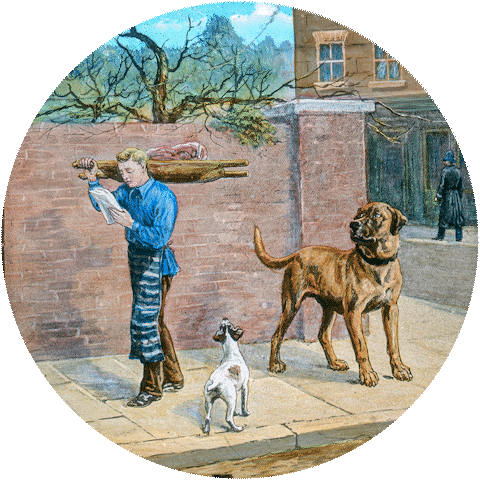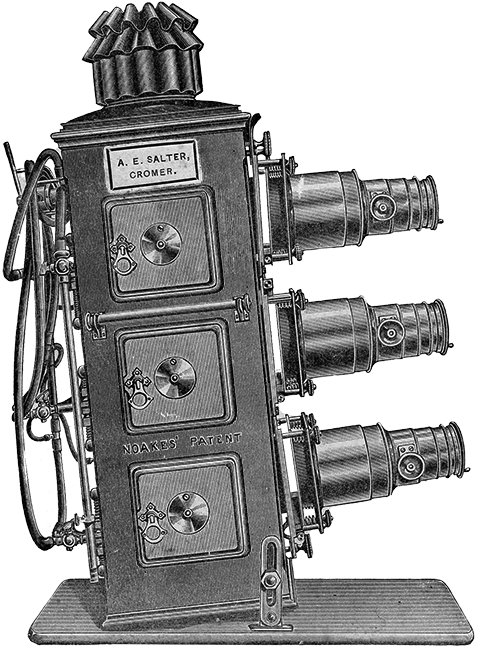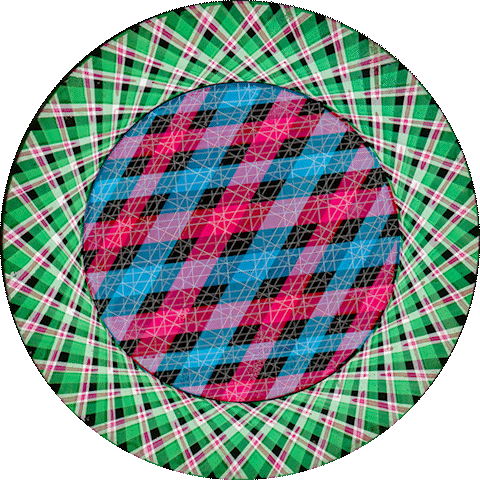In Victorian times, the magic lantern was at its peak as a popular form of entertainment. If you're visiting Norfolk, you can still sometimes catch presentations of the Randall-Salter lantern show. Schoolteacher Alfred Salter collected the slides on behalf of the local Band of Hope, the temperance society for young people. Robert Randall, and later his son Harold Randall, would present the slides whilst Alfred Salter gave the readings. The local committee produced a catalogue - circa 1891 - of the slides that could be borrowed from the Band of Hope.

Let's start on this page with a short set of slides that don't really require a commentary - the story of the 'Dogs and the Butcher'. There'll be lots more slides as we have time to add pages.

If you're a collector of lantern ephemera, or just generally interested in the subject, you'll want more information on the Magic Lantern Society web site.
In the 19th century, the shows would sometimes be given with a triple or triunial lantern, allowing all sorts of special effects. Today the shows are generally given with a biunial or double lantern. Dissolving views, slipping slides, firework effects, local views and slides from around the world are all included in the show. But just in case you can't get to the show, you can see some of the slides on these pages. In fact, the movement on your computer screen produced by an animated GIF is very similar to the effect produced by the lanternist by using two pieces of glass!

The highlight of any show was the slipping slides and the chromatropes. The details in the catalogue indicate that you could only hire two or three of these slides to go with the main selection you were hiring - not too much excitement from moving pictures then! Here's a chromatrope, using two contrarotating pieces of glass.


